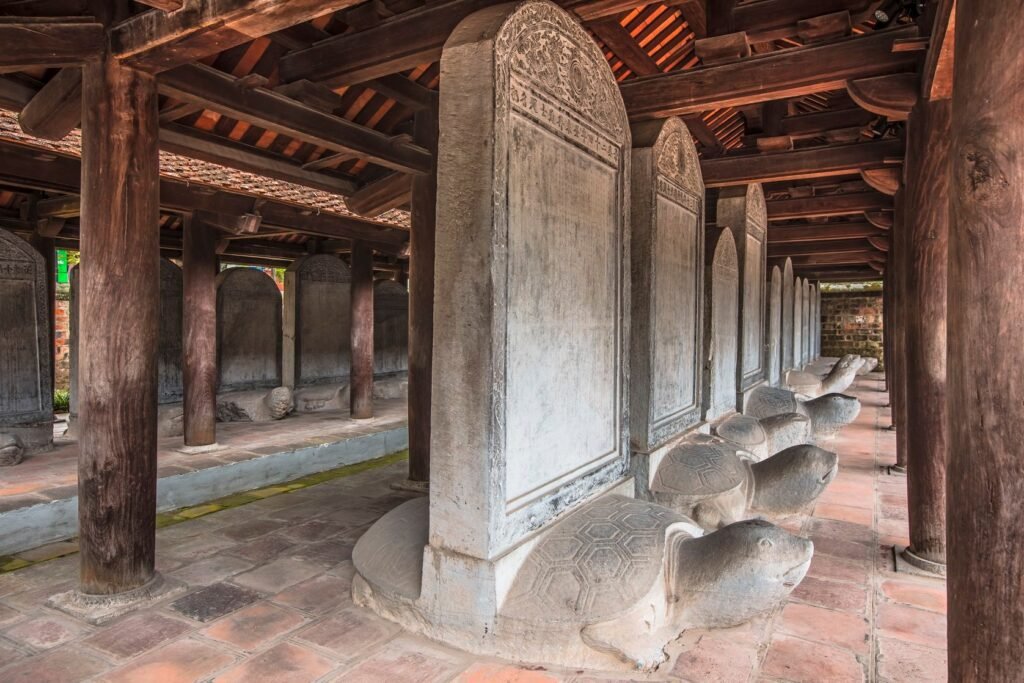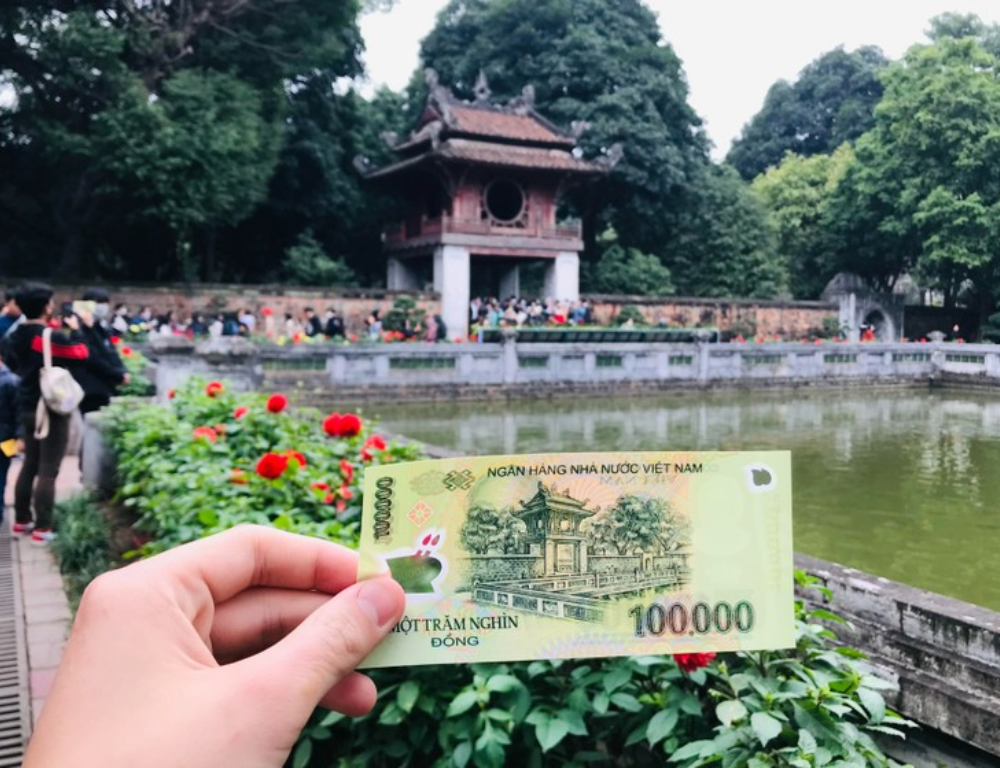A Complete Guide to the Temple of Literature: History, Architecture, and Tips
Welcome to a journey through one of Vietnam’s most treasured historical sites: the Temple of Literature. As the oldest university in Vietnam, this temple stands as a symbol of Vietnamese intellectual heritage, art, and devotion to education. Whether you’re a history buff, an architecture enthusiast, or simply a curious traveler, this Temple of Literature Guide will take you through the history, architecture, and insider tips to make your visit truly unforgettable.
History of the Temple of Literature
The Temple of Literature, or Van Mieu, was established in 1070 by Emperor Ly Thanh Tong. Initially built to honor Confucius, the temple soon evolved into Vietnam’s first national university, known as the Imperial Academy (Quoc Tu Giam), educating scholars, mandarins, and future leaders. Over centuries, it became a prestigious institution that preserved Vietnamese knowledge, Confucian ideals, and classical literature. This Temple of Literature Guide will help you explore this historical site and learn more about its significance.


🔥 Discover the heart of ancient Hanoi at the Imperial Citadel of Thang Long!
Cultural Significance of the Temple of Literature
Designated as a UNESCO World Heritage Site, the Temple of Literature is a hallmark of Vietnamese culture. For centuries, it has been a place for honoring learning, intellectual achievement, and dedication to Confucian values. This temple complex, a key part of any Temple of Literature Guide, is more than a monument; it’s a tribute to the intellectual spirit and educational legacy that has shaped Vietnamese society.
🔥 Immerse yourself in the city’s Oldest and Most Beautiful Temple: Tran Quoc Pagoda Hanoi
Exploring the Temple’s Unique Architecture
Combining Confucian and Vietnamese architectural styles, the Temple of Literature showcases traditional red pillars, ceramic roofs, and stone carvings. The layout follows a classical design, divided into five courtyards, each representing a different stage in a scholar’s journey through life and knowledge.




1. The Five Courtyards of the Temple
Each of the five courtyards within the Temple of Literature has its own unique purpose and design, guiding visitors through a symbolic journey of growth, wisdom, and enlightenment.
⟡ First Courtyard: The Entrance to Knowledge
The main gate, Van Mieu Mon, opens to the first courtyard, where lush gardens greet visitors. This courtyard represents the beginning of the educational path, welcoming students and scholars alike with a sense of peace and inspiration.

⟡ Second Courtyard: Pathway of Scholars
Here, visitors walk along serene pathways, surrounded by ancient trees and peaceful gardens. Statues and inscriptions encourage a reflective mood, perfect for contemplating the pursuit of knowledge.
⟡ Third Courtyard: The Pavilion of the Constellation of Literature
The Khue Van Cac, or Pavilion of the Constellation of Literature, stands as one of the temple’s most iconic structures in this guide. This charming, two-story pavilion, built in 1805, symbolizes the essence of Confucian learning and scholarly ambition. Its unique architecture and intricate details make it a highlight for photographers.


⟡ Fourth Courtyard: The Heart of the Temple
The fourth courtyard, Van Mieu, houses the shrine of Confucius and his disciples. This sacred area features an altar where visitors can pay respects, signifying the temple’s role as a spiritual haven for scholars seeking enlightenment.
⟡ Fifth Courtyard: A Place of Learning
The Oldest University in Vietnam (Temple of Literature), specifically the Quoc Tu Giam, served as the ancient classrooms and residences for students. Here, scholars once studied Confucian texts, honing the skills that would prepare them for government service.
🔥 Delve into Vietnamese history and culture at fascinating Hanoi Museums!
2. The Stelae of Doctors: Honoring Vietnam’s Scholars
Eighty-two stone stelae honoring Vietnam’s top scholars from the 15th to 18th centuries are displayed in the temple. Each stela, mounted on a stone turtle (a symbol of longevity and wisdom), commemorates the scholars who passed the rigorous royal exams. This collection is a national treasure, representing the achievements of Vietnam’s learned elite.


📸 Contact us via WhatsApp or follow Sun Getaways Travel Fanpage to get the best information for your Hanoi trip. Or follow these posts to get the details if you want to:
Preservation Efforts and Renovations
Over the years, the Temple of Literature has undergone several restorations to preserve its architectural and cultural significance. Modern conservation efforts, as part of the Temple of Literature Guide, are focused on maintaining the integrity of the temple’s structures, as well as preserving its ancient gardens and artifacts for future generations.
What to See and Do at the Temple of Literature
A guided tour is a fantastic way to experience the Temple of Literature fully. Each courtyard and pavilion provides a unique spot for reflection, photos, and exploration. The Pavilion of Constellation, with its iconic red and white details, is a must-see for any visitor looking to capture the essence of the temple in a photograph.


🔥 Wander through the charming streets of Hanoi French Quarter.
Best Times to Visit and Visitor Tips
Though the Temple of Literature can be enjoyed year-round, spring and autumn offer the best weather for an outdoor visit, according to most guides. Arrive early to avoid crowds, and dress respectfully.


Dress Code and Behavior Tips:
- Wear modest clothing and comfortable shoes.
- Keep noise to a minimum, especially around worship areas.
- Be respectful when photographing, especially around sacred spots.
Nearby Attractions to the Temple of Literature
The Oldest University in Vietnam (Temple of Literature) is a must-visit, followed by exploring nearby Hanoi landmarks, such as the Ho Chi Minh Mausoleum, the One Pillar Pagoda, and the Hanoi Old Quarter. These destinations provide a richer understanding of Hanoi’s diverse cultural and historical tapestry.






🔥 Escape the city and explore the beautiful countryside through Hanoi day trips.
FAQs
- What is the best time of year to visit the Temple of Literature?
The ideal times are spring and autumn, for comfortable weather and fewer crowds. - Is there an entrance fee for the Temple of Literature?
Yes, there is a small entrance fee, which helps support preservation efforts. - Can I take photos inside the temple?
Yes, photography is allowed, though be mindful of areas marked as restricted. - Are there guided tours available?
Yes, guided tours in various languages are available, offering deeper insights into the temple’s history. - Is the Temple of Literature accessible for visitors with limited mobility?
Some areas are accessible, but note that the historic layout includes steps and uneven surfaces.
Conclusion
The Temple of Literature, a cultural gem and architectural wonder, embodies Vietnam’s dedication to learning and reverence for scholars. A visit to this Temple of Literature Guide allows you to walk through centuries of Vietnamese intellectual history and provides a serene setting for reflecting on the profound value of education and knowledge.
Experience Vietnam like never before with Sun Getaways Travel. Our all-inclusive trips cover every detail, from accommodations and transportation to unforgettable experiences, depending on your interests (Our Customized Private Tour for each customer to Vietnam 🇻🇳). Ready to embark on your next adventure?
Ask a question
Leave a Comment (0)
No questions yet. Be the first to ask a question!




















